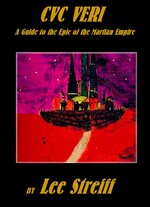
About the Author: Lee Streiff
Lee Streiff was born in 1932 in Wichita, KS. He graduated from Wichita University with a Bachelor's in Liberal Arts and Sciences in 1955. He did graduate work at the University of Illinois in Champaign-Urbana with a Master's thesis on semantics and literary criticism. He attended Northwestern University in Evanston, IL. as a John Hay Fellow.
For thirty-five years, Lee taught at Wichita High School Southeast, first teaching English - then American Literature, composition, Advanced Placement and Honors English - and later in Social Studies - teaching Humanities, psychology, sociology, world history, European history, international relations, current events and the history of religion. He was the Chairman of the Social Studies Department at Southeast for 18 years until he retired in 1992. He also taught a number of courses during this time at Wichita State University including composition, linguistics, literature, and computer science.
Lee was a poet and author from an early age, creating his own fanzine at fourteen on a hectograph machine. Later he published on a ditto machine and eventually published under his own Vortex Press. Within the last few years, Lee also completed this guidebook, CVC Veri, the Guide to the Epic of the Martian Empire, and two other books. One is the culmination of his interest and expertise in the areas of linguistics, literature, myth, and archeology, entitled "The Star Caves." The other is a non-fiction tentatively titled Shadowland. He was also a contributor of information for various articles and websites dealing with the history of the Wichita Beat Era, included in the" Beats in Kansas" website.
Some of Lee's early friendships in Wichita included artist Bruce Conner, poet Michael McClure, and publisher/poet Dave Haselwood of the Auerhahn Press.
Lee was particularly active over the course of his professional career in the areas of curriculum development, political action by teachers, teacher negotiations, and advancing teacher rights, including obtaining academic freedom for teachers and defending them against attempted censorship of teaching materials. Because political action was an important factor in gaining teacher rights, he and another teacher formed a statewide Political Action Committee of Educators (PACE) in the 1960's, which became an important tool in achieving a number of goals. In 1968 he became the Chief Negotiator for the local teachers' union, NEA-Wichita, in its negotiations with the Wichita school board and negotiated the first comprehensive teacher group contract in Kansas. At this time he wrote a handbook for teacher negotiators in Kansas which was sold through Kansas-NEA across the state to locals beginning negotiations. In 1969 he wrote and helped get a professional negotiations bill passed in the Kansas legislature. Throughout his teaching career, Lee served on innumerable committees, panels, and boards and held a variety of offices, in a number of professional organizations. In 1970, he was elected President of NEA-Wichita, an organization of over 3,000 teachers. While involved in NEA-Wichita, he also developed several programs at the local and state levels designed to assist in the racial integration of the Wichita school system and to advance the role of minority teachers in decision-making within the profession.
In 1972 he discovered a multi-layered archaeological site in east Wichita - the "Hackberry Site" (14SG508) - the lowest layers of which dated back to about 100 CE. The site later received Historical Preservation status both locally and at the state level. In 1976 he received a grant from the Wichita school system to excavate the site with high school students with help from advisors from WSU. In 1974 he was co-founder of the Archaeological Association of South Central Kansas, and in 1975-76 he was President of AASCK. The organization is associated with the Anthropology Department of Wichita State. He was also active in Kansas archeological efforts to educate the public about the need for preservation of archaeological sites. In 1981 he was awarded the "Outstanding Achievement Award" for Historical Preservation by the Wichita Preservation Alliance.
In 1979 he developed a computer model of voter behavior in the precincts in the city of Wichita and - using it - helped to elect a number of school board members friendly to teachers' causes, and two City Commissioners.
Over the years he had numerous articles published in a variety of magazines and journals on topics including political action, negotiations an innovative Humanities program for high schools, archeology, and desegregation.
After he retired, Lee created a website that has recently been restored by one of his students, Steve Coulson. In the website, Lee wrote many articles and posted many pictures, poems and art work of people of the Beatnik era from Wichita Kansas, called: "The Wichita Vortex Home page." In Wikipedia you can find Lee Streiff's name listed under "Beatnik" since he gave the best description available on the title: "Beatnik."
But most of all, as well as being a great teacher, Lee Streiff was a caring, fun-loving son, husband, father, friend, and brother.

Introduction
By Lee Streiff
"In 1937 James Streiff and Bob Parks created 'the Epic of the Martian Empire'; in 1942 Paul Carter added his vision of the Cosmic Vortex to it, and the Universe was never the same again..." Lee Streiff
Once we lived in the world of the Martian Empire, but that now seems like a long time ago -- it all began in those last remaining years before World War II changed our consciousnesses forever. It was an ephemeral, still time; a quiet space in which we could dream about the future without the burden of its consequences: ghastly war -- genocide -- the atomic bomb.
It was in 1937... and my brother James was 13, and in the eighth grade at Robinson Junior High School in Wichita, Kansas. And in James's mind he was fashioning a cosmic empire filled with strange and wonderful creatures and races -- in which a stalwart group of Exiles from the planet Mars were the chief actors and heroes.
This Empire, the Martian Empire, eventually spread over most of the known Universe before it finally faded away in 1948'. During the eleven years it flourished however, the Martian Epic became very elaborate -- covering some 15 billion years of Martian history -- and Martian technology, manners and morals, art, music, religion, language and literature. And it generated a narrative Epic that encompassed many galaxies.
Although a number of people became involved in this epic -- Bob Parks, John Roth, Robert Frickel, Charles Goodrum, and Robert Arnold, among others -- it was first and foremost the vision of James, who worked out and brought together the maps, timelines, the celestial spaces, the customs, and the characters that made up the Martian Empire in all its diverse grandeur.
In early 1937 I was only four years old -- and so it was that most of my childhood and youth were somehow surrounded or suffused with the images and tales of the Epic. However it was not until I reached the age of eleven that I became the brief inheritor of, and participant in the affairs of the Epic itself.
It was during World War II in 1943. that I first took over the job of running the business of the Martian Empire while all of its members were away from Wichita, in the Army, Navy, and Air Force. Knowing that he would soon be drafted, James began grooming me for the task early in that year. He reported for active Military duty on June 3, 1943, and that changed the course of my daily life. I was now on my own, with a heavy responsibility,
I published The Martian News Letter, the official journal of the group, using carbon paper -- and a bit later a hectograph; published, The Order of Shultz, which circulated the business of the inner circle; reorganized The Files; answered correspondence among the far flung Martians scattered around the globe; and did research for a number of topics for James, using my contacts in the world of Science Fiction Fandom.
When James returned from active service in February of 1946, my task had been completed, and in any case, my interests were largely turning in other directions. By 1947, in my sophomore year at East High School, I was even leaving Science Fiction itself behind and was now involved in art and literature. But then that is another story.
In the Following seven Chapters, Lee Streiff describes in his "Guide to the Epic of the Martian Empire" of how the tales and creation of the Epic... all came about.
 Introduction
Introduction